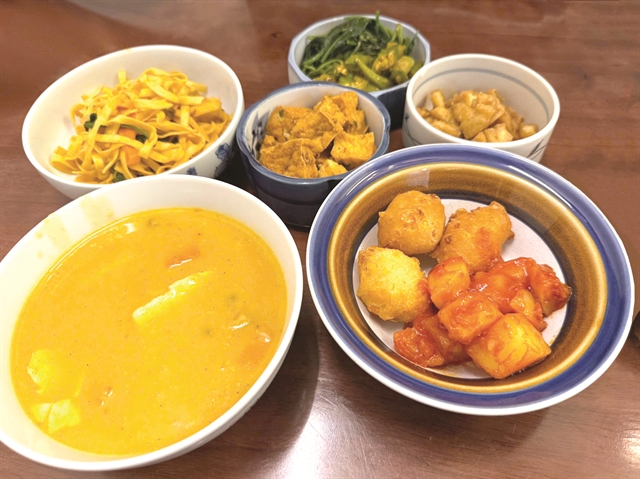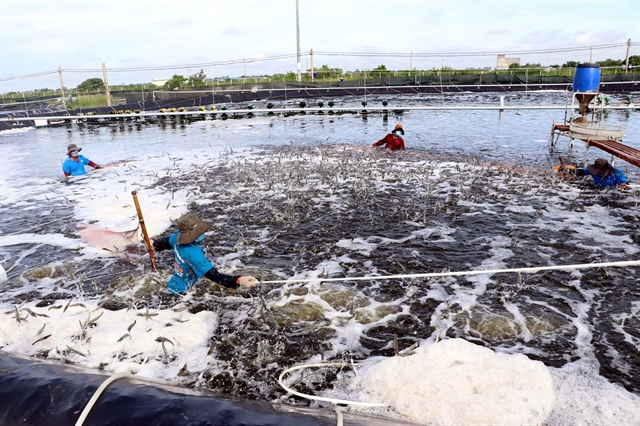 Opinion
Opinion


|
| A hi-tech shrimp farm in Trần Đề District, the Mekong Delta Province of Sóc Trăng. — VNA/VNS Photo Trung Hiếu |
Director General of the Directorate of Fisheries Trần Đình Luân told Quân đội Nhân dân (Army’s People) newspaper about the difficulties in granting a production unit code for shrimp-farming areas
Why is it necessary for aquaculture production areas to have the production code?
The code has been granted to tra fish growing areas in Việt Nam. The code not only helps meet tra fish importers’ requirements in origin traceability but also helps State agencies better manage and direct production thanks to further sufficient data.
Thanks to the data, the agencies can learn exactly about production areas, estimated yearly outputs and then take proper action to manage production and consumption.
The code also provides information about the origin of aquacultural products and then detects problems in specific sections – production, transportation or processing.
Moreover, international importers are becoming stricter in product origin traceability, especially in the US with the Seafood Import Monitoring Program (SIMP) - a risk-based traceability programme requiring the US importer of record to provide and report key data - from the point of harvest to the point of entry into US commerce - on more than 1,100 unique species.
When Việt Nam joined new-generation free trade agreements, the compliance relating to the origin of raw materials became a top priority. Therefore, the country developed regulations on code for areas that grow key export products with aims to meet the requirements of international integration.
Granting a code for tra fish growing areas goes smoothly while granting for shrimp-growing areas faces difficulties? What causes the difficulties?
In my opinion, the main problem in granting a code for shrimp-growing areas is insufficient communication between authorities and shrimp farmers.
Shrimp farmers have not fully understood the importance of the code, so they are not interested in registering to get it.
In some cases, the code granting offices – commonly the province’s fishery management agency – is far away from the shrimp farms, which are blamed for improper communication.
Meanwhile, shrimp farmers have difficulties in completing their registration for aquaculture production units as they don’t have the land-use certificate or land-rent certificates. In some cases, farmers are raising shrimp in rice land/forest land without registering with local authorities about the changed purpose of the land use.
Many farmers used land-use certificates as a deposit to borrow loans at banks, thus now, they are unable to complete procedures to change the purpose of land use from rice land to aquaculture growing land.
How do you do to support localities in granting a code for shrimp growing areas?
To solve such problems, the Directorate of Fisheries conducts communication campaigns to help shrimp farmers properly understand relevant regulations and then to register to get the code. The directorate cooperates with People’s Committees at all levels to speed up the granting of land-use certificates and approving the changed purpose of land use in areas that were already planned for aquaculture production.
The COVID-19 pandemic has badly affected the aquaculture sector. What do you think is the biggest difficulty that the sector has to overcome going forward?
Việt Nam targets a seafood export value reaching US$8.8 to 8.9 billion this year. In the first seven months of this year, its seafood export value was nearly $5 billion, marking an increase of 13 per cent compared to the same period last year. It is a heavy task to complete this year’s goal in the remaining five months of this year.
Now, important tasks are to concentrate on COVID-19 prevention and control, to meet the food demand of people living in locked-down areas or those under social distancing.
Moreover, production schemes must be adjusted to match COVID-19 prevention and control requirements. We also need to ensure the supply of input materials and boost consumption.
We hope that as the whole country is making restless efforts to fight against the COVID-19, the aquaculture sector can achieve its goals this year. This will pave the way for further achievements in the coming years. — VNS